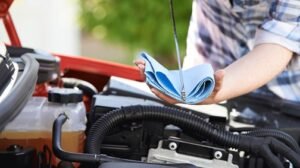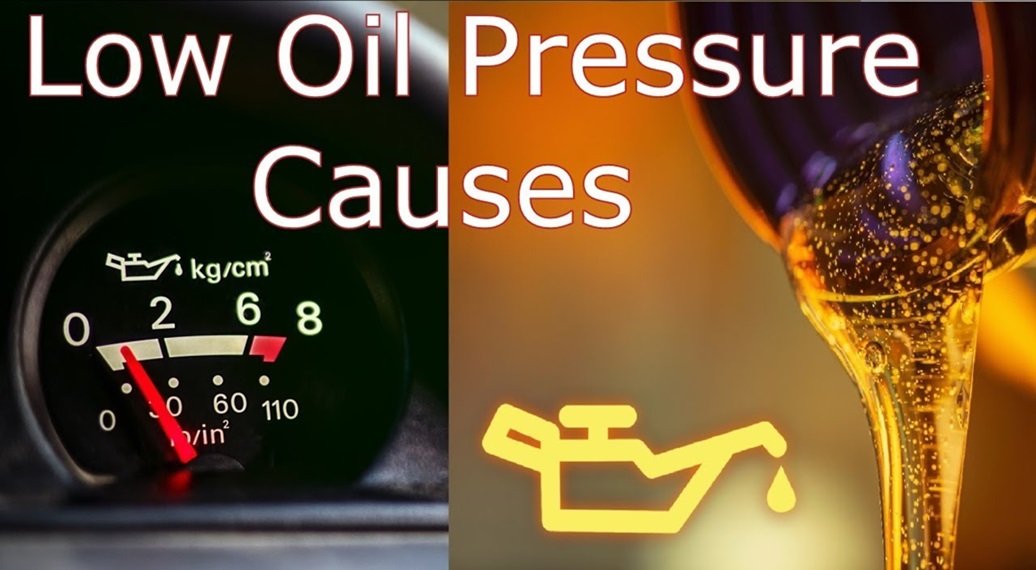Maintaining the proper oil pressure in your vehicle’s engine is crucial for its performance and longevity. Low engine oil pressure is a common issue that can lead to serious engine damage if not addressed promptly. Understanding the causes of low engine oil pressure and knowing how to fix them can save you from costly repairs and ensure your vehicle runs smoothly.
What is Engine Oil Pressure?
Engine oil pressure refers to the force with which oil is pumped through the engine’s components, providing lubrication and reducing friction. Adequate oil pressure ensures that all moving parts are properly lubricated, preventing wear and tear and helping the engine operate efficiently. When the oil pressure drops below the manufacturer’s recommended levels, it can result in insufficient lubrication, leading to increased friction, overheating, and potential engine damage.
Common Causes of Low Engine Oil Pressure
1. Low Oil Level
One of the most straightforward causes of low engine oil pressure is a low oil level in the engine. If there isn’t enough oil in the system, the oil pump can’t generate the necessary pressure to lubricate the engine effectively.
How to Fix: Check the oil level using the dipstick and top it up if it’s low. If the oil level drops frequently, inspect for leaks or consider that the engine may be burning oil.
2. Oil Leaks
Oil leaks can cause a significant drop in engine oil pressure. Leaks can occur from various parts of the engine, such as the oil pan, valve covers, or gaskets. Over time, the constant loss of oil can deplete the oil level, leading to decreased pressure.
How to Fix: Identify the source of the leak by checking under the car and around the engine. Replace any faulty gaskets, seals, or damaged components to stop the leak.
3. Worn Out Oil Pump
The oil pump is responsible for circulating oil throughout the engine. If the oil pump is worn out or damaged, it won’t be able to maintain the necessary pressure. This can lead to insufficient lubrication and, ultimately, engine failure.
How to Fix: If the oil pump is faulty, it will need to be replaced. This is a complex repair that may require a professional mechanic, as the oil pump is typically located inside the engine.
4. Clogged Oil Filter
The oil filter is designed to remove impurities from the engine oil. However, if the filter becomes clogged, it can restrict the flow of oil, leading to low oil pressure. Over time, this can cause severe damage to the engine components.
How to Fix: Replace the oil filter regularly as part of your vehicle’s maintenance schedule. If you suspect a clogged filter, replace it immediately.
5. Viscosity Issues
The viscosity of the engine oil affects its ability to flow through the engine. Using oil with the wrong viscosity can lead to low oil pressure. For example, if the oil is too thick (high viscosity), it may not flow easily, while oil that is too thin (low viscosity) may not provide adequate lubrication.
How to Fix: Always use the oil type and viscosity recommended by the vehicle manufacturer. If you live in an area with extreme temperatures, consider using an oil that is suitable for those conditions.
6. Engine Wear
Over time, engine components such as bearings, pistons, and cylinders can wear out. This wear can create larger gaps between the parts, which can cause a drop in oil pressure as the oil escapes through these gaps instead of maintaining pressure.
How to Fix: Engine wear is often a sign of an aging engine. In some cases, replacing worn components can restore oil pressure. However, if the wear is extensive, it might be more cost-effective to consider an engine rebuild or replacement.
7. Faulty Oil Pressure Sensor
The oil pressure sensor monitors the oil pressure and sends this information to the engine control unit (ECU) or the oil pressure gauge. If the sensor is faulty, it may send incorrect readings, indicating low oil pressure even when the pressure is adequate.
How to Fix: Test the oil pressure with a manual gauge to confirm the readings. If the sensor is faulty, replace it with a new one.
How to Diagnose Low Engine Oil Pressure

Diagnosing low engine oil pressure requires a systematic approach. Here are the steps you can take:
- Check the Oil Level: Begin by checking the oil level with the dipstick. If the oil level is low, top it up and monitor the pressure.
- Inspect for Leaks: Look for any visible signs of oil leaks around the engine and under the vehicle.
- Examine the Oil Filter: If the filter hasn’t been changed recently, replace it and see if the pressure improves.
- Test the Oil Pressure: Use a mechanical oil pressure gauge to get an accurate reading of the oil pressure. Compare the reading with the manufacturer’s specifications.
- Check the Oil Pump: If the oil pressure remains low, the oil pump may be the issue. Has it been inspected by a professional?
- Scan for Error Codes: If your vehicle has a check engine light on, use an OBD-II scanner to check for any error codes related to oil pressure.
Preventing Low Engine Oil Pressure
Prevention is always better than cure. To avoid low engine oil pressure, follow these maintenance tips:
- Regular Oil Changes: Change your engine oil and filter at the intervals recommended by the manufacturer. Fresh oil maintains proper viscosity and helps prevent wear.
- Use the Right Oil: Always use the oil type and viscosity specified in your vehicle’s owner’s manual.
- Check for Leaks: Periodically inspect your vehicle for any signs of oil leaks and address them immediately.
- Monitor Oil Levels: Regularly check the oil level and top up as needed. If you notice a rapid drop in oil levels, investigate the cause.
- Address Engine Issues Promptly: If you notice any unusual engine noises, decreased performance, or warning lights, have your vehicle inspected by a mechanic.
Conclusion
Low engine oil pressure is a serious issue that can lead to significant engine damage if not addressed promptly. By understanding the common causes and knowing how to fix them, you can keep your engine running smoothly and avoid costly repairs. Regular maintenance, including oil changes and inspections, is key to preventing low oil pressure and ensuring the longevity of your vehicle’s engine.
Also, Read About, How to Become a Radiology Tech: Your Complete Guide.
